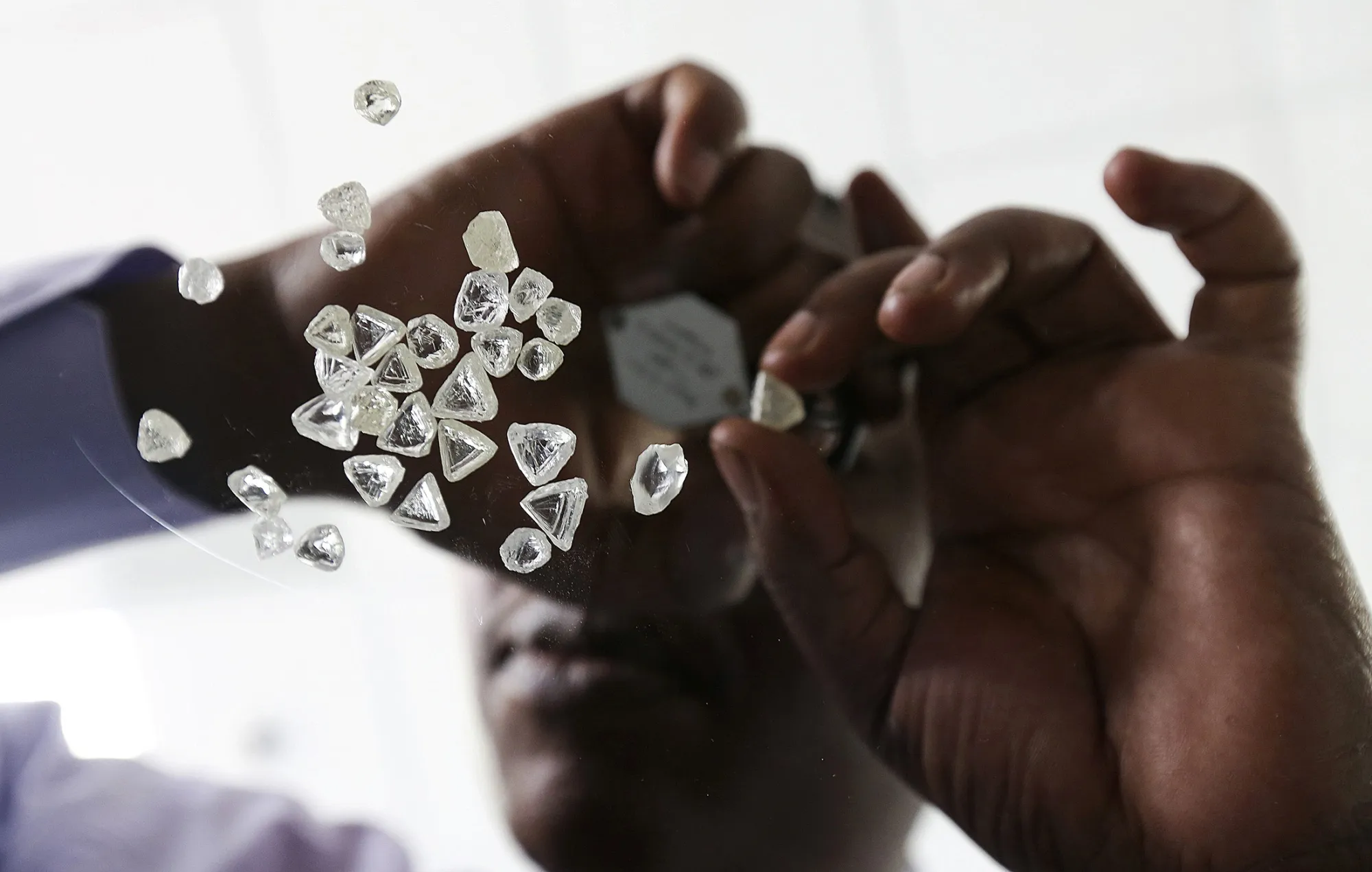Botswana’s Diamond Crown Under Threat as Lab-Grown Gems Flood Global Market

For decades, Botswana has been celebrated as one of Africa’s most remarkable economic success stories, transforming from one of the world’s poorest nations at independence in 1966 into the richest country per capita in sub-Saharan Africa. At the heart of this transformation has been diamonds. The discovery of vast deposits and the country’s pioneering partnership with global giant De Beers turned Botswana into a model for resource-led development.
But now, the diamond kingdom faces a new challenge: the rapid rise of lab-grown diamonds, a technological breakthrough that is reshaping global jewelry markets and threatening the revenues that Botswana has relied on for decades.
The Diamond That Built a Nation
Botswana’s diamond story is unlike any other in Africa. Unlike neighbors plagued by resource mismanagement, Botswana used diamond wealth prudently — investing in infrastructure, education, and healthcare. Revenues from diamonds account for about one-third of the nation’s GDP and more than 70% of its foreign exchange earnings, making them the backbone of its prosperity.
The partnership between the government and De Beers, formalized through the joint venture Debswana, ensured that revenues were shared in a way that benefited the nation. Roads, schools, hospitals, and social programs all owe their existence to the glittering stones mined deep beneath Botswana’s soil.
The Rise of Lab-Grown Diamonds
In recent years, however, technology has changed the landscape. Lab-grown diamonds — chemically and visually identical to natural stones — can now be produced in weeks using high-pressure, high-temperature methods or chemical vapor deposition. Initially dismissed as inferior, these gems have gained mainstream acceptance, especially among younger, eco-conscious consumers who see them as more sustainable and affordable alternatives.
The price gap tells the story: lab-grown diamonds can sell for up to 80% less than mined diamonds, making them increasingly attractive in a global economy where consumers are sensitive to cost. Jewelry chains from the United States to India now stock them prominently, and some have even reduced their reliance on natural stones altogether.
The Economic Threat to Botswana
For Botswana, this shift carries enormous consequences. As lab-grown gems flood the market, the value of natural diamonds has come under pressure, with prices declining significantly in recent years. Lower revenues from diamond exports directly threaten the country’s ability to finance its national budget and sustain the high standard of living its citizens have come to expect.
Economists warn that if global demand for natural diamonds continues to erode, Botswana could face budget shortfalls, stalled development projects, and reduced foreign investment. Given that diamond exports account for such a large share of the economy, the country has fewer buffers against this structural disruption.
De Beers’ Dilemma
The situation is further complicated by De Beers itself. In a surprising twist, the company that built its empire on mined diamonds has entered the lab-grown market with its Lightbox Jewelry brand, offering affordable, lab-created gems. While the company insists it is keeping its natural and synthetic businesses separate, critics argue that De Beers is undermining Botswana’s core source of wealth by legitimizing lab-grown stones.
Botswana’s government has voiced concerns, warning that any shift away from natural diamond promotion threatens its economic model. As one official noted, “If diamonds lose their rarity and premium, Botswana loses its lifeline.”
Searching for a New Economic Model
The challenge now facing Botswana is existential: how to diversify an economy so heavily dependent on diamonds. For years, leaders have talked about reducing reliance on gems, investing instead in tourism, agriculture, and financial services. Tourism, especially centered on the Okavango Delta, has shown promise, but it remains a fraction of diamond revenues.
Some argue that Botswana should embrace the lab-grown industry itself, investing in technology and manufacturing to become a global hub for ethical and affordable diamonds. Others contend that doing so would accelerate the decline of natural stones, cannibalizing the very industry that sustained the nation for decades.
A Crossroads for the “Miracle of Africa”
Botswana’s diamond wealth was once described as a miracle — a rare example of how resource riches could lift a nation rather than curse it. But miracles are not eternal. With lab-grown gems reshaping consumer demand and eroding the mystique of natural diamonds, Botswana faces one of the most critical crossroads in its modern history.
The government’s ability to adapt — by balancing the promotion of natural diamonds with economic diversification — will determine whether Botswana can preserve its hard-won prosperity or risks being left behind in a market where scarcity no longer defines value.

















